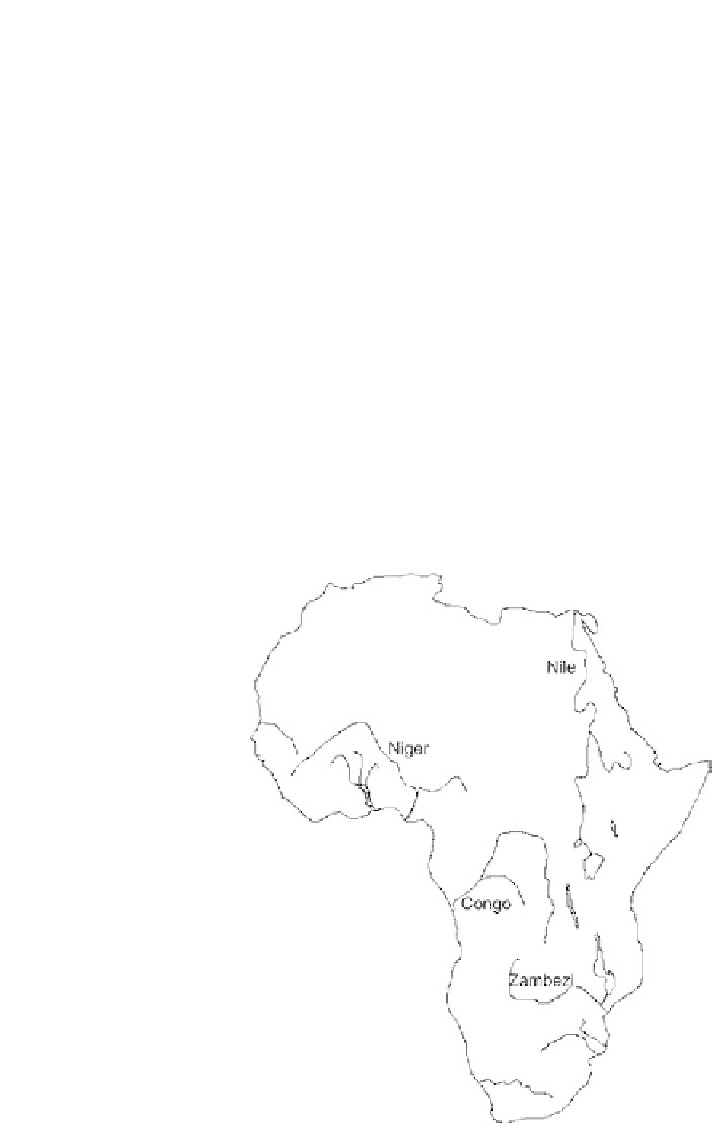Agriculture Reference
In-Depth Information
the immediate rainfall area. Some models show increasing temperatures decreasing
water in major rivers in Africa. This would be important because these provide
direct food as fish and indirect food as the water is used for irrigation for crop
production.
2
The Niger River (Fig. 8.18) starts in Guinea and runs through Mali, Niger, and
finally Nigeria. The river provides direct food in the form of fish and indirect food in
providing water for irrigation. Any dramatic change in water flow in the river would
affect both. The figure does not show the numerous tributaries of these rivers, which
also provide food and water.
In addition to changes in water availability, climate changes will also change
wind patterns. Increased windy conditions would be either neutral or negative depend-
ing on the wind, its speed, humidity, and when it occurred. Strong winds during the
early parts of the growing season would have little effect on crop growth. As crops
mature, strong winds can adversely affect pollination, and, when grain formation
begins, wind can knock over crops, causing lodging, making harvest difficult and
causing a loss of yield.
In dry climates strong dry winds can increase evapotranspiration and thus increase
the need for water in soil or for additional irrigation. They would also increase the
Figure
8.18.
Major rivers of Africa—the four longest and most important; the Nile, Niger,
Congo, and Zambezi are shown.








